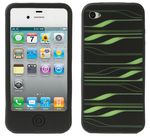Boot Raspberry Pi from a 16MB SD card
Posted by Mike Redrobe | Posted in PC Hardware | Posted on 12-05-2014
Tags: raspberry pi
21
The Pi boots from SD card, and this normally means you have to have at least a 2GB SD card,
but you can instead use a small SD card and a USB pendrive, as I show here.
The Raspberry Pi only needs an SD card at bootup time, it can immediately hand over to a USB pendrive later, and here’s how:
Take one ancient 16MB SD card – yes, 16MB – not the 1000x larger 16GB cards we use nowadays !

You’ll also need a USB pendrive of 2GB or bigger (or usb HDD of course)
1) select your usb pendrive in win32diskimager instead of the sd card, and write the image
(e.g. 2GB raspbian: http://downloads.raspberrypi.org/raspbian/images/raspbian-2013-09-16/)

2) copy all the pre-boot files (9mb) to the SD card
https://www.dropbox.com/s/84r95jovi4rlv64/raspbian-boot-folder.zip
(I had to remove kernel_emergency.img from the normal boot files as that was 9mb in itself)
3) edit the cmdline.txt on the SD card to read /dev/sda2:
That’s it – all done, put SD card and USB pendrive into the Pi and boot up.













